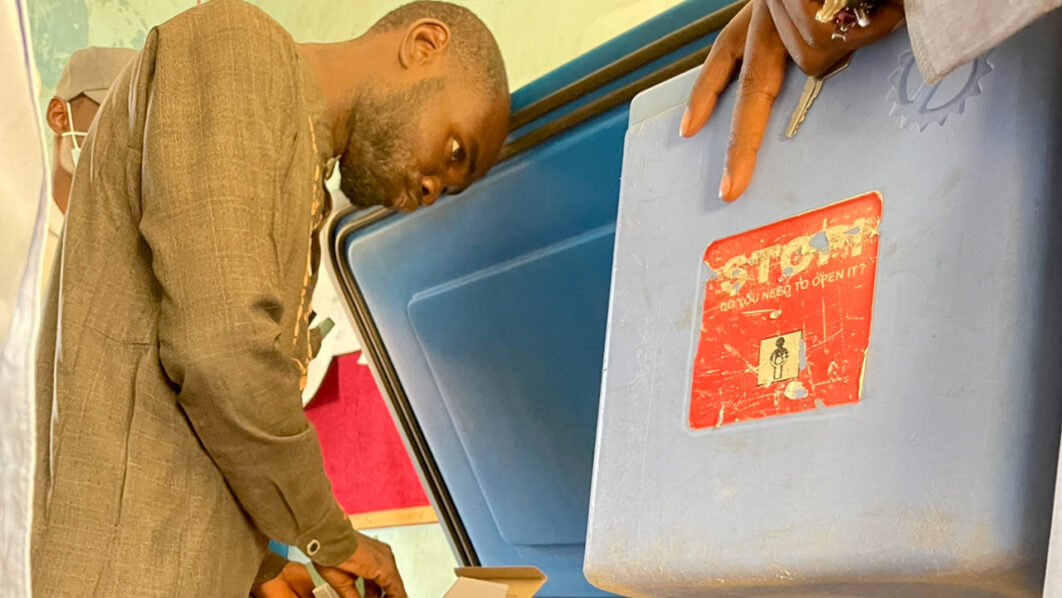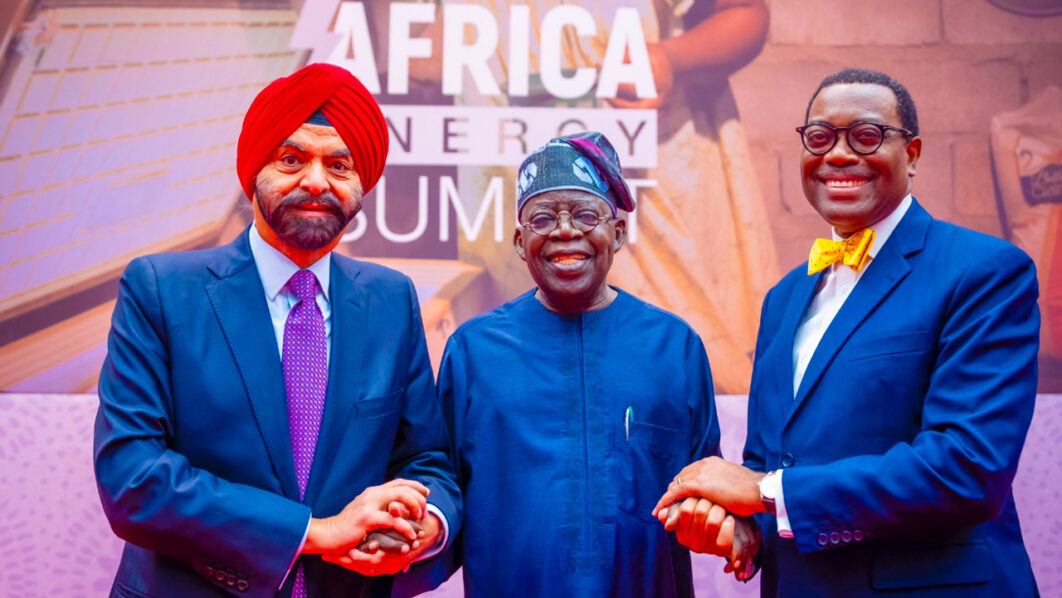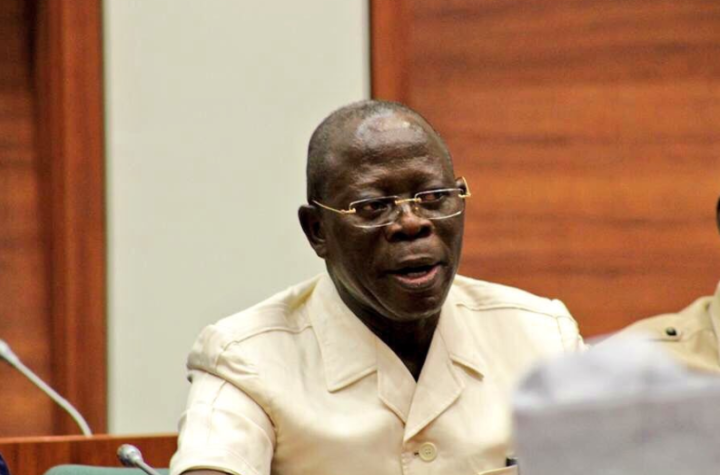
The industrialisation campaign and efforts at making poverty a relic on the African continent have been thwarted by the lack of access to reliable and sustainable energy. Despite the region’s unparalleled sunlight energy all year round, roughly 600 million people in Sub-Saharan Africa still lack access to electricity supply. It is to end the blackout that Mission 300, an initiative aimed at providing electricity access to 300 million people in sub-Saharan Africa by 2030, is viewed as a game-changer that would transform Africa’s energy landscape if faithfully implemented, KINGSLEY JEREMIAH and WALIAT MUSA report.
On January 22, 2025, at about 9:36 a.m., immunisation officers were already converging on the Dr Karima Primary Healthcare Centre in Tudun Wada, Gusau, Zamfara State. These officers from different parts of the state rely on the centre, which has been installed with solar power to refrigerate vaccines for newborns.
Travelling through Sokoto State to Zamfara, hundreds of dilapidated electric poles along the road are without cables and have been so for several months. Prolonged insecurity has left most of these communities in darkness, thereby leaving newborns at risk of receiving no vaccine or safe immunisation.
Despite the existence of over 600 primary healthcare centres in Zamfara State alone, the facilities have been overwhelmed by the influx of pregnant women, malnourished children, and the elderly, some of whom the lack of electricity for the preservation of medical consumables have sent to their early graves.
This is because most governors are torn between increasing budgets for healthcare and other critical services. The existence of these hapless Nigerians is further threatened by other forms of crises including, climate change, insecurity, and hunger.
A laboratory technician, Musa, who scans most pregnant women at Dr Karima Primary Healthcare Centre, acknowledges the enormous ground that the hospital has covered in curtailing the mortality crisis since the solar power system was installed in the facility.
Pointing to a power generating set sitting in one corner of the out-of-shape ultrasound scan room, Musa said: “We had a lot of downtime because of the high cost of fuel, but since the solar power system was installed nine months ago, a lot has changed.”
Apart from having over 600 primary healthcare centres, Zamfara has 18 general hospitals and 47 maternal and child health clinics. Like others across Nigeria, the lack of electricity remains one of the critical reasons why most children don’t survive to pursue their dreams.
While rural and other at-risk communities in Zamfara State and other parts of the North-West may be excused, the case involving Ajifa (second name withheld) in the Kubwa area of Abuja, speaks a lot about the depth of the power crisis in Nigeria.
“When I was about to deliver my first child, shortly after I got into the theatre for a Caesarean section, the power generating plant went off. The hospital turned on its alternative power generating set only for it to work for about two minutes and also shut down. After many attempts to fix the device failed, we had to bring in a power plant into the hospital for the operation to be carried out,” Ajifa explained to a startled audience during a testimony session at a Redeemed Christian Church of God branch, in the Kubwa area of Abuja.
The reality in Nigeria is that in government hospitals and rural clinics, doctors and nurses battle not just diseases, but also the absence of electricity. Without a stable power supply, surgical procedures are postponed and some are conducted under conditions that sometimes complicate treatment. Life-saving equipment, including incubators and ventilators, frequently stop working thereby putting patients at risk.
The health sector is just one of the many critical areas in the country where the ease of doing business for small and medium-sized enterprises (SMEs) is worsening.
A frozen food seller in Sokoto State, Ibrahim has had his share of this national malaise, which the inability to keep power on to enable him to sell fresh fish to residents now constitute
I spend more on fuel for my power generating set than I make in profit. Sometimes, I have to throw away spoilt fish and meat because I can’t afford to power my freezers 24/7. If the situation continues, I may have to shut down,” he said.
In Port-Harcourt, Chidinma Okoroafor runs her fashion outlet in the Rukpokwu area of Airport Road. The single mother of one, whose marriage crashed from domestic abuse, started her fashion designing business after it became difficult to secure a white collar several years after graduating from the Abia State University, in 2013, with a degree in sociology.
Working for six days a week with her three staff and a number of trainees, she powers her generators with at least 10 litres of fuel (daily). This amounts to a lot of money in addition to other operating expenses.
“There is barely light. Some lucky days we may get five hours of light, but most days, we don’t have light at all,” Okoroafor said. Although she pushes this cost to her customers, the hike in service charge is already creating a tough time for her groaning clients, who are in turn limiting their demands.
Just recently, Vice President Kashim Shettima sat down with manufacturers at the Agbara Industrial Zone in Ogun State to discuss how the zone could be electrified.
For decades, businesses operating in the cluster did not utilise energy from the national grid. For these manufacturers, energy costs account for over 50 per cent of their operating expenses. As energy prices escalate, some of these manufacturers account for the hundreds of companies that the Manufacturers Association of Nigeria (MAN) said were shutting down production yearly.
While these manufacturers are looking for ways to get reliable and affordable electricity, they are not thinking about the national grid because the grid is not reliable. In fact, statistics of electricity consumption patterns from the Nigeria Electricity Regulatory Commission (NERC) showed that household consumers on the grid stand at about 80 per cent, while industrial customers stand at about 20 per cent. In an ideal country, the consumption pattern should be the other way around.
Poor electricity access as a continent-wide challenge, stunting development
WITHOUT access to electricity, Africa cannot achieve its developmental aspirations or secure its rightful place in the global economy as energy access is the cornerstone of economic transformation, opening doors to education, healthcare, and income generation.
Across Africa, electrification efforts have been tepid, failing to keep pace with rapid population growth, especially in rural and remote areas where outdated energy infrastructure is struggling to meet current demand, let alone expand to underserved areas.
Without access to reliable power, economic opportunities remain constrained, with households and small businesses bearing the brunt of the challenge. The reliance on alternative energy solutions, such as diesel power generating plants places significant strain on household budgets and stifles the growth of small enterprises due to high operational costs.
In rural areas, the lack of extensive power infrastructure is also forcing families to depend on kerosene lamps, which aside from being expensive expose them to serious health risks due to indoor air pollution.
According to Statista, the number of people without electricity in sub-Saharan Africa steadily increased from 2000 to 2013, reaching a peak of approximately 612 million.
However, between 2014 and 2019, several countries on the continent made some strides towards increasing access to electrical energy and improving overall conditions.

Statista reported a decline in electricity access in sub-Saharan Africa in 2021, with approximately 597 million people lacking electricity connections, compared to 581 million in 2020. This indicates that nearly five out of every 10 individuals in the region lived without access to power. The situation was even more severe in rural areas, where over 70 per cent of the population lacked electricity.
The World Bank’s 2024 report highlighted that Central and West Africa have some of the lowest electrification rates globally with 220 million people in West Africa living without power, representing an electrification rate as low as 8 per cent in some areas.
Similarly, the International Energy Agency (IEA) reported that 600 million Africans lack access to electricity, out of a population of over 1.3 billion, accounting for approximately 83 per cent of the global energy deficit.
What makes this challenge particularly significant in Africa is that, for many years, the power sector has been plagued with interconnected challenges, including low access rates, poor maintenance, inadequate investment, non-cost-reflective tariffs, unsustainable subsidies, and financial instability.
Most public utilities in Africa are financially strained. They struggle to meet their operating expenses and are unable to fund necessary capital investments to sustain their operations, leaving them heavily dependent on government subsidies.
Mission 300 initiative to the rescue?
IN response to the continent’s urgent energy crisis, the African Development Bank (AfDB), in partnership with the World Bank and other development partners, recently unveiled the Mission 300 initiative. This initiative aims to provide electricity access to 300 million people in Sub-Saharan Africa by 2030. The collaborators emphasised that Mission 300 is more than just a numerical goal as it symbolises lives transformed, economies rejuvenated, and communities empowered.
Furthermore, the initiative is aimed at accelerating electrification by combining grid expansions with decentralised renewable energy solutions like mini-grids and stand-alone solar home systems. These solutions are especially useful in reaching vulnerable and remote regions where traditional grid infrastructure is not feasible.
Alongside these efforts, there are investments in generation, transmission, regional interconnection, and sector reform that are made to guarantee that the power supply is reliable, affordable, and sustainable.
Mission 300’s approach combines traditional grid expansion with innovative off-grid solutions to connect remote communities. The programme also focuses on sustainable financing models and tackles critical challenges, including currency mismatches in project funding.
Importantly, private sector involvement is essential in tackling Africa’s energy challenges, especially given the continent’s rapidly growing population and the urgent need for increased investment.
Stakeholders, therefore, emphasise that the success of Mission 300 is hinged on the collective efforts of governments, private sector players, and international partners, adding that governments must take the lead by implementing essential reforms to enhance sector efficiency and strengthen utilities.
They stressed that transparent, competitive processes for generating new capacity, along with cost-recovery frameworks for utilities, are vital as regulators would need to adapt quickly and innovatively to keep pace with the rapidly evolving technological and business landscape.
Governments and development partners, the stakeholders noted, should advocate for regional electricity trade to move away from the single-buyer model and facilitate the sustainable integration of Variable Renewable Energy (VRE) into fragile grids, thereby supporting energy transition in African nations.
With the private sector already playing a crucial role in expanding renewable energy access, particularly by implementing decentralised energy solutions, this approach is highly commendable, because of its effectiveness in areas where traditional utility-scale projects struggle due to infrastructure limitations.
Meanwhile, multilateral development banks and philanthropic organisations must increase their efforts to unlock private capital for the energy sector. This, experts note, can be achieved through targeted financing instruments, risk mitigation tools, technical support, and policy advocacy.
In addition to all these, regulatory authorities in many African countries face political interference, which undermines their decision-making processes and hinders their ability to implement policies that are crucial for the long-term development of the energy sector.
Electricity as life wire for transforming societies, fostering development
IN emphasising the transformative role of electricity in fostering development, the President of AfDB, Akinwumi Adesina said: “No economy can grow, industrialise or be competitive in the dark. Access to electricity is not just about power, it’s about creating jobs, improving healthcare, and fostering education. Mission 300 represents a bold step towards lighting up and powering Africa.”
On his part, the Vice President for Power, Energy, Climate, and Green Growth at the AfDB Group, Kevin Kariuki, stated that Mission 300 goes beyond being an energy initiative to even “a moral obligation. It embodies a shared commitment to lifting millions out of poverty, promoting inclusive economic growth, and building a resilient, green future.
He further emphasised that the success of the initiative depends on strong support from all stakeholders, including governments, development partners, the private sector, and civil society. Kariuki, therefore called for a unified focus on prioritising reforms, mobilising investments, and leveraging partnerships to transform Africa’s energy landscape.
“Energy access is the cornerstone of economic transformation, unlocking opportunities for education, healthcare, gender equality, and income generation. It is a prerequisite for creating a green and resilient future, one where poverty is a relic of the past. The road ahead may be challenging, but it is also filled with opportunity. With determination, innovation, and collaboration, we can achieve universal energy access in Africa. This is our moment to make history,” he said.
The Special Adviser to President Bola Ahmed Tinubu on Media and Public Communication, Sunday Dare, highlighted Nigeria’s advancements in the energy sector during the Mission 300 Africa Energy Summit in Dar-es-Salaam, Tanzania. He noted that Tinubu has accelerated key initiatives to enhance energy access nationwide.
He emphasised Nigeria’s dedication to renewable energy, highlighting ongoing efforts in solar and clean energy under President Tinubu’s administration. Dare noted that the President is set to unveil a compact initiative aimed at advancing this agenda.
Dare highlighted that existing partnerships are yielding results, citing the AfDB’s commitment of N75 billion to Nigeria’s Rural Electrification Agency (REA) to enhance renewable energy development.
He expressed confidence in Nigeria’s capacity to meet its energy commitments, emphasising the key pillars of President Tinubu’s energy policy as: sustainability, affordability, and accessibility, which align with the broader objectives of the summit.
“Africa coming together to pool its resources, whether it’s hydro, solar, wind, or the emerging green hydrogen is commendable. With our enormous gas deposits and tropical sunlight, we have what it takes to power the continent, Tinubu is a president who can make a pitch for his country, win deals, and secure solid commitments for foreign direct investments. Look at what happened in Brazil and what’s happening in agriculture. He’s bringing that same determination to energy,” he said.
Daniel Schroth, the Director for Renewable Energy and Energy Efficiency at AfDB, highlighted the urgent need for implementation to tackle Africa’s energy crisis.
“It’s a tight journey because 2030 is only five years away and we have to deliver, not expected connections, but actual connections to 300 million by 2030,” he said.
Also, AfDB’s Director of Energy Financial Solutions, Policy, and Regulation, Wale Shonibare, emphasised that investments in generation, transmission, regional interconnection, and sector reform must complement efforts to ensure that power supply is reliable, affordable, and sustainable.
“The recently launched Technical Facility Accelerator Fund is a promising step in this direction, providing technical assistance to governments and helping streamline processes to achieve Mission 300 targets. By working together, we can transform the energy landscape of Africa and, in doing so, create a brighter, more prosperous future for millions,” he said.
The World Bank Group President, Ajay Banga emphasised that the partnerships forged and commitments made will shape the continent’s journey toward achieving universal energy access, transforming millions of lives, and driving sustainable development.
Lax monitoring, unsustainable tariff structure, infrastructure deficits, others could mar initiative
AN energy expert and President of the Nigerian Society of Economics (NES), Prof. Adeola Adenikinju, insisted that powering Nigeria and other countries remained critical but commitments over the years have not been backed by action. For the current efforts to succeed, Adenikinju called for a transparent timeline open to the public.
“We also need to know the responsibilities of each party in the agreement. There is a need to have a monitoring board made up of key stakeholders to monitor and produce quarterly reports and report to members of the public. In other words, every stakeholder must be part of the process to monitor and evaluate progress,” he said.
Another energy expert, Dr Ibrahim Danbata noted that while the plan is commendable, similar initiatives have failed in the past due to weak policy implementation, infrastructure deficits, and unattractive investment conditions. He, therefore stressed the need for clear and transparent energy policies that encourage competition and private-sector participation.
He argued that without a fair and sustainable tariff structure, investors would be reluctant to commit their resources to the project. Danbata, who also stressed the importance of investing in renewable energy, noting that 50 per cent of the proposed power supply is expected to come from sources such as solar, wind, and hydro, added that prioritising renewables would accelerate electrification, particularly in rural areas that are currently off the grid even as he called for urgent investment in infrastructure, including transmission and distribution networks.
According to him, Nigeria recorded nearly 12 national grid collapses in 2024 alone, demonstrating the need for modernisation. He suggested that integrating advanced technology such as Supervisory Control and Data Acquisition (SCADA) systems could help detect faults early and reduce downtime.
While flexible financing models, such as pay-as-you-go solar systems, and microgrid solutions would go a long way in improving electricity access for low-income households, Danbata emphasised that training local engineers and technicians is necessary to sustain the project in the long term.
Weighing in on the issue, a renowned energy economist, Prof. Wunmi Iledare, warned against a populist approach to solving Africa’s electricity crisis. He stated that while power is essential for economic growth and improved quality of life, it should not be treated solely as a public good.
Iledare argued that the scale of investment required is beyond what governments alone can provide and that private investors must be incentivised with transparent and accountable governance.
According to Iledare, Africa’s power sector needs a diverse energy mix, with private investors playing a leading role, while governments focus on creating effective regulatory frameworks.
He stressed that a transformational mindset is necessary to drive this agenda, urging governments to focus on policy incentives and efficient institutions rather than direct involvement in power generation and distribution.






